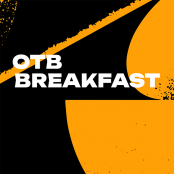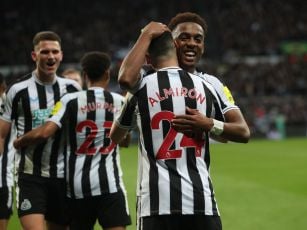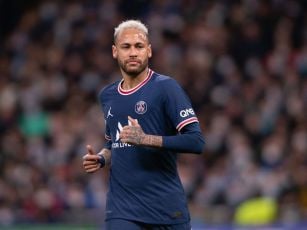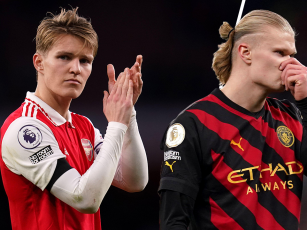While for many Europe and South America remain the epicenter of the world’s greatest footballers, attempts have been made over the years to truly globalise the sport.
The Australian A-League has grown in popularity down under while the Chinese Super League looks set to become a dominant force in world football. Many will credit the MLS with bringing the soccer into the social conscience in the United States.
But before Major League Soccer gave credence to the sport's growing popularity, the North American Soccer League reigned supreme and who better to exemplify the “live fast, die young” attitude of America’s first fully national league than the Philadelphia Fury.
“It was a brand new franchise, you had a number of musicians who invested in it” explains former squad member, John Giles.
“That seemed the thing to do at the time, because a lot of people were keen on the game.
“I think you had some people had invested in the New York Cosmos. It was the fashionable thing to do, the pop groups were copying their mates who had already given it a go.”
Frank Worthington famously said in Ian Plenderleith's Rock 'n' Roll Soccer: The Short Life and Fast Times of the North American: "A lot of footballers are frustrated rock stars and I think it works in reverse, a lot of rock stars are frustrated footballers."
With the collapse of the Philadelphia Atoms in 1977, just four years after they had won the national Championship, soccer in the City of Brotherly Love was in disarray.
The club had been for sale and bought by a consortium of teams, but failure to to pay a mandatory performance bond meant the club was bust.
NASL commissioner Phil Woosnam was keen to ensure that soccer returned to the city after seeing the draw and appeal of the Atoms and pushed for the foundation of the Fury when the league expanded in 1978.
Setting up and running a franchise was costly business, as the Atoms had shown, so it took heavy investment from unlikely sources.
Rick Wakeman, keyboardist for English rock band Yes, Peter Frampton and Paul Simon all dusted off their cheque books to get the ball rolling.
With the foundation of the franchise came the return of former Atoms to the team. But heavy investment from rock stars of their stature demanded more swagger. Local lads just wouldn’t cut it.
“There was a lot of English lads there, Peter Osgood was over with us, as was Alan Ball. The Irish crowd mixed quite well” says Giles.
Big name stars were not unusual in the NASL, Pele was finishing off his stint with the New York Cosmos, while Gerd Muller and Johan Cruyff both plied their trade Stateside.

Philadelphia Fury's John Dempsey tackles the Washington Diplomat's Johan Cruyff. Image: Peter Robinson / EMPICS Sport
Osgood and Ball along with Giles were brought in as marquee signings as well head coach Richard Dinnis who had previously been in charge of Newcastle United.
Surprisingly enough, there featured a heavy contingent of Irish players.
Fran O’Brien and Eddie Byrne joined from Bohemians, while Pierce O’Leary, who would later spend four years at Celtic, accompanied Giles as the pair came from Shamrock Rovers.
O’Brien would later be named the team’s MVP come the end of the first season.
Life for the NASL’s 22nd franchise began rather meekly in the Eastern Conference; they were beaten 1-0 in their opening game by the Washington Diplomats at Veteran’s Stadium.
In truth, only the Tampa Bay Rowdies and the Fort Lauderdale Strikers offered the only meaningful opposition in the league.
The delay in the arrival of their marquee signings meant that the could only manage a record of 12-18 in their maiden season.
They still managed to make the play-offs thanks to a rather unique points system.
A side would be awarded six points per win and an additional point for each goal they scored up to a maximum of three points (e.g should the Fury beat the Diplomats 5-2, they would be awarded nine points, while the Diplomats would receive two).
“That was also very good. It encouraged teams to play for a draw and teams who were being beaten heavily to keep going.”
This wasn’t the only difference to the league.
“I didn’t know a lot about the NASL before I left and what I heard I didn’t like which was that it was gimmicky and that the Americans are going to change this and that.
“This wasn’t the case at all. I was very impressed with it. They made a few changes that I were very unique.
“They had a 35-yard rule. A lot of teams at that time were playing offside, so they were running up to the halfway line. The 35 yard rule meant that you couldn’t be offside outside 35 yards from the goal.
“It stopped teams running to the halfway line and that. This was very, very good. Up to that point it had been a scourge on the game in England at that time because a lot of teams were just running out and slowed the game down.”

The Philadelphia Fury home jersey. Image: www.nasljerseys.com/Jerseys/Fury_Jerseys
Alongside that was the shootout rule which differed slightly to a traditional shootout, resembling ice hockey rather than soccer.
“In the NASL you couldn’t draw, someone had to win. So if a game ended a draw, it’d go to a shootout. We have the penalty shootout like we used to but this was brilliant.
“You started on the halfway line with a ball and only the goalkeeper to beat. You only had five seconds to get your shot away. It doesn’t sound much, but you had plenty of time to take a shot.
“There was a real art to it because this was more to do with the game. Teams didn’t go away with a scoreless draw. It might be a no scoring 90 minutes, but someone had to win. There was always a climax in every game you played in and it encouraged teams away from goal not to be playing or a draw.”
The Fury were beaten in the play-off it was at the end of the first season, signalling the beginning of the decline for the franchise.
Peter Osgood returned to Chelsea after a thoroughly uninspiring spell where he only managed one goal and struggled with injuries.

Peter Osgood spent a season with the Fury. Image: www.nasljerseys.com/Jerseys/Fury_Jerseys
After 20 appearances, John Giles returned to Shamrock Rovers in a player-manager capacity.
There were also changes at boardroom level, Rick Wakeman and Brian Lane decided enough was enough and left as co-owners.
Richard Dinnis had left the club by the end of the first season, leaving Alan Ball, one of the more experienced players in the side, to take over.
He would be replaced in the second season by Marko Valok, former head coach of the Yugoslavian National team.
Their penultimate season summoned further uninspiring performances, but the arrival and success of Frank Worthington who fired in 21 goals in his first season helped things along.
The decision to part with Alan Ball seems like a curious decision in hindsight. He went to the Vancouver Whitecaps where he would be part of their championship winning team.
However, a season poorer than ‘78 yielded a 10-20 record but still guaranteed them a place in the play-off, thanks in no small part to the effort of David Robb who netted 16 times for the team.
Having beaten Houston Hurricane in the Conference quarter-final, they were dispatched at the semi-final stage by the Fort Lauderdale Strikers.
Unfortunately, Robb went the way of Ball after the ’79 season. Their most accomplished striker was shipped off to the Vancouver Whitecaps also, on the others of new head coach, a third in three years, Eddie Frimani.
Such instability at the club did little to pull fans back into the feel good factor that had built-up during their second consecutive run in the play-offs.
During their third season they would miss the playoffs and with supporter attendance dwindling, the franchise was sold to Canada, where it would re-brand as the Montreal Manic.
Just five years later the North American Soccer League would be finished. The numbers interested in taking part in the league dropped significantly, with some opting for the Major Indoor Soccer League.
The NASL left a legacy of instability, with teams neither relegated or promoted rather just existing within the confines of their conference.
The closure became warning tale of how not to run a league and the Fury, through poor investment and unstable owners, stayed true to their rock'n'roll heritage: Live fast, die young.
You can listen to the full interview on this week's Team33 below.
Download the brand new OffTheBall App in the Play Store & App Store right now! We've got you covered!
Subscribe to OffTheBall's YouTube channel for more videos, like us on Facebook or follow us on Twitter for the latest sporting news and content.








